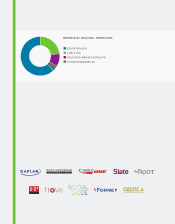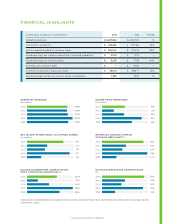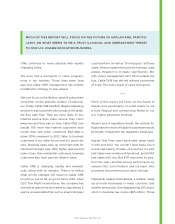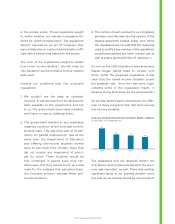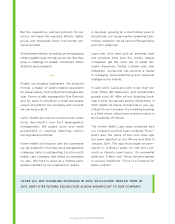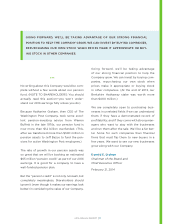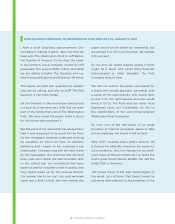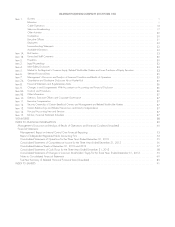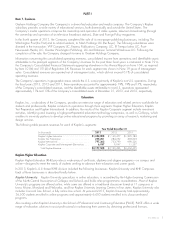Washington Post 2013 Annual Report Download - page 9
Download and view the complete annual report
Please find page 9 of the 2013 Washington Post annual report below. You can navigate through the pages in the report by either clicking on the pages listed below, or by using the keyword search tool below to find specific information within the annual report.
2013 ANNUAL REPORT | 7
job placement plays as great a role as it does at
Kaplan’s campuses. For openers, the placement
director reports to the president of the campus
and is a key member of the president’s team.
Our job is to get jobs for our students. When pol-
icy leaders in Washington are willing, I like to take
them to KU’s campus in Hagerstown, Maryland,
where President Chris Motz and his team (KU’s
leaders, in this respect) have achieved an employ-
ment rate of well over 90% for three years in a
county with persistently high unemployment.
As we’ve engaged with legislators, regulators
and policymakers, many have asked us: “How
do we punish the bad actors in private-sector
education?”
There are plenty of ways to do that. But we
can tell anyone who cares that today’s federal
regulations and those that are being planned
absolutely punish the good providers in the pri-
vate sector—those who are seeking to provide
a quality education for students who need one.
I’ve saved the issue of tuition for last, since our
answer is so clear:
1. Kaplan’s Mount Washington College is oering a
bachelor’s degree in business or information
technology for a total (not annual) cost of
under $25,000 if a student takes four years
to complete the program, or under $20,000
if the student pursues the program without
any breaks.
2. We would lower the cost of some of our
degree programs today if federal regulations
permitted. We would, therefore, suggest a
simple law we think would pass Congress
unanimously. No federal regulation should be
invoked to prevent any college from lowering
its tuition. (I’ve covered this subject in past
annual reports and will be pleased to write
about it again, to anyone who wonders how
federal regulations could be increasing col-
lege prices in our sector.)
In short:
1. We are willing to lead the way in holding
down or lowering our tuition;
2. We are willing to lead the way in enrolling
more low-income students; and
3. We are willing to lead the way in demon-
strating how much students learn while they
are enrolled in our programs.
KAPLAN’S ENORMOUS INVESTMENT IN CURRICULUM, TECHNOLOGY, FACULTY,
LEARNING SCIENCE AND STUDENT SUPPORT, AS WELL AS ITS DEEP COMMITMENT
TO HELPING STUDENTS SUCCEED, IS PAYING OFF.


